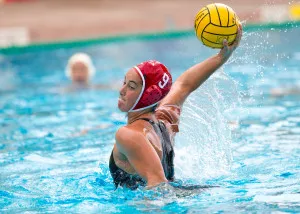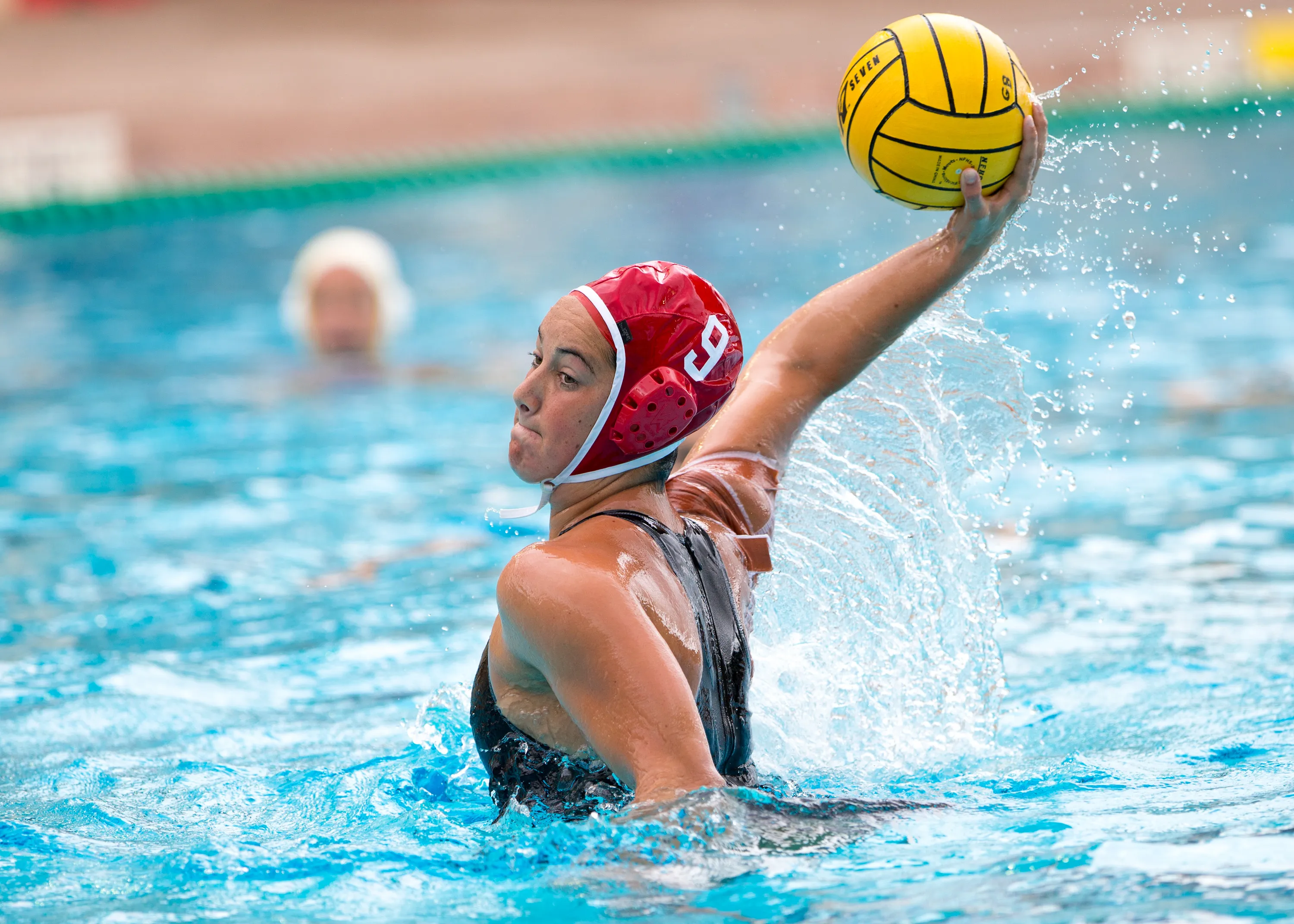The best college water polo team ever.
That’s what people called Stanford women’s water polo’s 2013 squad before it even played a game. The team has won the last two NCAA championships and now adds three players who took a gap year from Stanford last season to play for the U.S. National Team that won the gold medal at the London Olympics.

This team should dominate. This team shouldn’t lose a game. This team should have the easiest path to the NCAA title in history. Or at least, that’s what outsiders said. Expectations for this team have never been higher.
But not everything has gone smoothly. Stanford has already lost twice, falling in the finals of the UC-Irvine Invitational to USC back in February and to the Trojans again in the MPSF Championship game in April, and managing egos has proven to be a challenge.
“I think people want to know, ‘what is it like to have these expectations,’” said Stanford women’s water polo head coach John Tanner, “but every kid who comes here knows they have expectations. Their teachers have expectations, their classmates, their dormmates, there’s just an understanding that you are going to bring your A-game every day wherever you are on campus. And that’s why we’re here.
“So, it’s sort of, embrace that kind of challenge and love having people coming after us. ‘Oh you’re getting everyone’s best game’ — well, we want nothing less than that at any time, because that’s what we’re expecting from one another.”
Sophomore Kiley Neushul played a big part of the most recent of Stanford’s NCAA championships: last season’s national title. Neushul received the Peter J. Cutino award as the nation’s top collegiate water polo player in the aftermath of the championship run.
“It was really great,” Neushul said, “but it was nothing less than expected being recruited to this university and this team.”
Last year’s team won that championship without some of its biggest stars. Senior Melissa Seidemann, junior Annika Dries and freshman Maggie Steffens were off training with the national team for the Olympics.
Just two months after Neushul led Stanford to the NCAA title, her fellow 2011 signee Steffens propelled the National Team to the gold medal, earning Olympic Most Valuable Player honors along the way.
Steffens earned her fame by scoring goals. The talented freshman has a knack for beating goalies in many different ways. On the Olympic team, her role was to score. But according to Tanner, she affects the game in so many ways. And on Stanford’s loaded roster, Steffens’ other talents might be more important than her scoring.
With seven freshmen and the three Olympians joining — or rejoining — Neushul and the defending national champions, the pool is getting crowded with talented players unaccustomed to playing a supporting role.
“It’s been a little bit different incorporating everyone in, even socially,” Neushul said. “It’s a bigger team, and it’s a different dynamic.”
“At practice we have subs, and sometimes more people sit out for longer periods of time. So you’re kind of contributing in different ways. Playing less minutes, maybe, sitting out longer in practice, the whole thing is reps, getting reps in.”
While Neushul has been working to adapt to changes in practice, Seidemann has been working to adjust back to life as a student-athlete after a full year away from classes. Seidemann, who called the transition “really hard,” took a full course load of 20 units in the fall and winter quarters.
Seidemann has assumed a different role on the team this season, coming off her Olympic experiences. In the Olympics, especially the semifinal against Australia, Seidemann would go through stretches where she completely took over the game. According to Tanner, the experience has made her a completely different player.
The change has shown in the pool. Through the first 29 games of the season — 27 Stanford victories and the two losses to USC — Seidemann has averaged 2.31 goals per game. In 2011, the last time she played for Stanford, Seidemann averaged 1.75 goals per game.
But Steffens and Neushul, who won the award for best player in the Olympics and best player in the NCAA last season, respectively, have seen their roles as scorers decrease.
Neushul is scoring more than half a goal less per game than in her 2012 National Player of the Year campaign. After leading the team in 2012, she’s now scoring less than Seidemann and Steffens, and trailed freshman Anna Yelizarova for much of the season.
And Steffens’ decline in goal scoring has been much steeper. Over the six-game Olympic tournament, Steffens averaged 3.5 goals per game. Her Stanford average sits almost two goals per game lower at 1.86.
For two players who achieved so much success at such a high level last season, accepting decreased offensive roles has been a tough pill to swallow.
“There are a lot of egos on our team,” Neushul said. “We were all the best players at our high schools, but that’s the challenge coming into this program: suppressing those egos and getting everybody to work together as a team.”
While Neushul and Steffens have seen their goal scoring decrease, some of their teammates have suffered even harsher consequences from the very large influx of top talent.
“We can’t travel everyone all the time,” Neushul said, “so that’s kind of a bummer too. Whereas last year everyone traveled, like there was no competing for spots it was more like — I don’t want to say it was more of a family because this team is always going to be a family to me — but I would say it’s a little bit more competitive in some respects.”
The competitiveness within the team may have increased, but most of Stanford’s games this season have been nothing resembling competition. The Cardinal has outscored opponents by almost nine goals per contest.
So with the perhaps the best collegiate water polo team of all time in Cardinal red, at least on paper, Tanner has seen his competition turn to unconventional methods just to try to compete.
“Coaches have gone all over the world,” Tanner said, “trying to reel in Australians, Canadians, Spaniards, Hungarians, Dutch, Germans, you name it, to load their teams up quickly with talent to chase us. A lot of teams this year have very competitive teams because they’ve seen the writing on the wall and they want to come after us.”
With the surplus of international talent fueling Stanford’s rivals, the college game may start to feel like the Olympics. If Stanford can’t find a way to integrate its stars, the Cardinal, even with its surplus of talent from defending Olympic and NCAA champions, could come up short this weekend at the NCAA Tournament.
Contact Sam Fisher at safisher ‘at’ stanford.edu.
